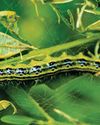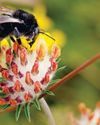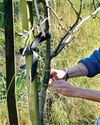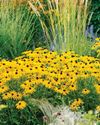
FOR many centuries, the theory held that if some part of a plant resembled a human organ, then that plant could be used to treat the organ it resembled. At the heart of folk remedy and herbalism, this notion was nurtured throughout the classical world by respected medical scribes as far distant as Dioscorides (c40-90BC, Greek physician and botanist) and Pliny the Elder (cAD 23-79, Roman naturalist, author of Naturalis Historia, the role model for all encyclopedias). It gained theological credence in medieval times, and for a while was central to Western culture.
The doctrine of signatures
It was known as the Doctrine of Signatures. The 16th century Swiss physician Paracelsus declared that ‘Nature marks each growth according to its curative benefit’, and German religious mystic Jacob Boehme travelled a similar course with Signature Rerum (The Signature of All Things, 1621), which is said to have influenced Isaac Newton and Friedrich Nietzsche among others.
It resurfaced as recently as 2006 in the work of US author Elizabeth Gilbert whose best-selling Eat, Pray, Love was made into a film in 2010.
Looks determine healing merit
For want of better explanation, medieval medicine embraced the notion that the appearance of plants was a sign from the Almighty. Respected 17th century English botanist William Coles wrote of herbs in Adam in Eden, or Nature’s Paradise that: “The Mercy of God . . hath not only stamped upon them a distinct forme, but hath also given them particular signatures whereby a man may read the use of them”.
This story is from the August 01, 2020 edition of Amateur Gardening.
Start your 7-day Magzter GOLD free trial to access thousands of curated premium stories, and 8,500+ magazines and newspapers.
Already a subscriber ? Sign In
This story is from the August 01, 2020 edition of Amateur Gardening.
Start your 7-day Magzter GOLD free trial to access thousands of curated premium stories, and 8,500+ magazines and newspapers.
Already a subscriber? Sign In

To dig or not to dig?
Should we be carrying out a full dig on plots now? Bob considers the pros and cons of the 'autumn dig' debate

The box ball blues
As if his beleaguered box hadn't already taken a beating, Toby now has to deal with some hungry box caterpillars

Save your own seeds
Masterclass on: seed saving

Strange sightings
Three unusual insects turn up in Val's garden in one day

A bolt from the blue!
Cornflowers are perfect for garden and vase

Winter moth prevention
Ruth shows you how to avoid maggoty tree fruits

Create a winter container
There are as many options as in summer

Lightweight gardening tools
AS well as being good for our mental health, gardening is also great exercise.

Autumn price round-up
AG finds better bargains in lesser-known brands

Rudbeckias
Rudbeckias are ideal for sunny summer patios and borders, with some able to survive our coldest winters